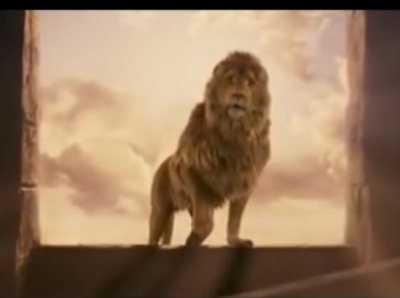
Aslan, a type of the Christ, resurrected (The Lion the Witch and the Wardrobe, 2005)
Just as Aslan, a symbol of Christ, had the final word over death; likewise the Lord Jesus will have the final word on Marriage.
On June 26, 2015, five justices of the supreme court took it upon themselves to overturn legally enacted state constitutional amendments against same sex marriage that had been enacted in 30 states[1], to redefine the meaning of marriage that has been understood as between a single man and a single woman for multiple millennia by the majority of religious adherents[2] and thereby disregard the religious beliefs of 2/3 of the world, so that the less than 4% of Americans[3] who identify as gay can legally fulfill their sinful desires. That is to say nothing of the trampling underfoot of the clear teaching of scripture[4], and the disregard for the maintenance of a modicum of morality (having already lost most of it to the sexual revelation) preferring instead to push us over the slippery slope toward polygamy, and a host of other evils.[5]
As one might expect, supporters of the gay-rights movement erupted in all sorts of displays of joy and approval. A new hashtag was born to link like minds: #lovewins. For those not on twitter, you can see a sample of the rejoicing here. I couldn’t help but be reminded of the scene from the 2005 production of CS Lewis’ The Chronicles of Narnia, The Lion, The Witch and the Wardrobe. Aslan has surrendered himself to the witch. The witch gloats in her apparent victory:
Behold, the great lion.
Bind him.
Wait, let him first be shaved.
Bring him to me.
You know Aslan, I’m a little disappointed in you.
Did you honestly think by all this that you could save the human traitor?
You are giving me your life and saving no one. Ha!
So much for love.(To the crowd) Tonight – the deep magic will be appeased. (Crowd is increasingly roused)
But tomorrow we will take Narnia forever! (round of cheering)
In that knowledge – despair and die! (thrusts a knife into Aslan)
The great cat is dead! (Cheers)
General, prepare you troops for battle. (General celebration continues)
(To herself) However short it may be.
As usual, Lewis’ allegories are uncannily accurate. Though I see at least eight parallels, so as not to be tedious, let me point out just three:

